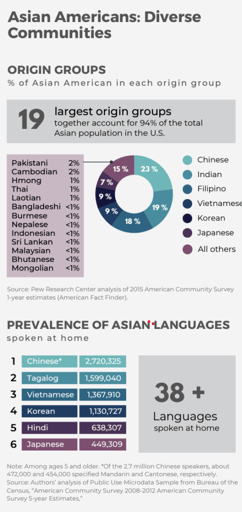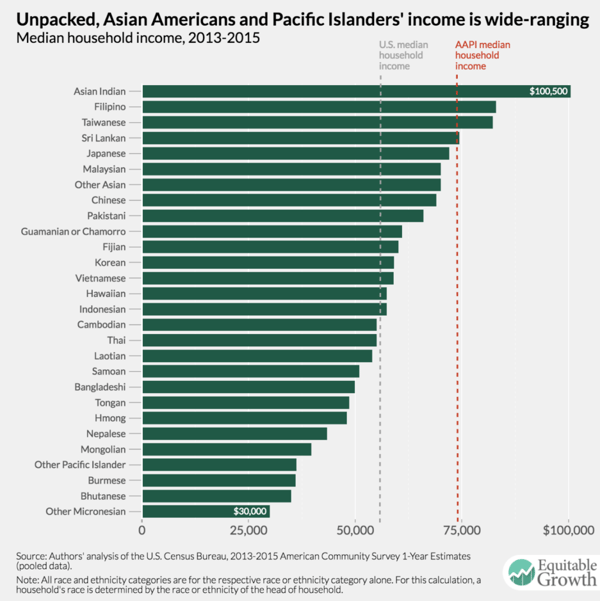Share this
Celebrating Diversity: Breaking Stereotypes for AAPI Students
by Annie Lee on May 15, 2023 5:22:45 PM
In the current demographic landscape, the Asian American population is highly diverse and fast-growing. Between 2000 to 2019, Asian Americans recorded the fastest population growth rate among all racial and ethnic groups in the United States, growing 81% during this period. By 2060, the number of Asian Americans in the US could grow to 35.8 million. That number more than triples their 2000 population (Pew Research Center).
The Model Minority Stereotype
Amidst these demographic gains, people often tout Asian Americans as a model minority. They portray them as intelligent, industrious individuals who achieve higher perceived success than the general population. The concept of the model minority stereotype was developed during the 1950s and 1960s largely in response to the ways in which Japanese Americans were perceived to have “successfully assimilated’ into American society, problematically juxtaposing their success to the ongoing oppression of African Americans.

Socioeconomic Disparities Within the Asian American Community
But such a stereotype masks the disparities in income and educational achievement in such a diverse group and, by extension, the inequalities faced by Asian American students. While some Asian ethnic groups like Koreans and Chinese show high levels of educational achievement, fewer than one-in-five Laotians (18%) and Bhutanese (15%) have at least a bachelor’s degree. By comparison, roughly a third of all Americans age 25 and older had at least a bachelor’s degree in 2019 (Pew Research Center). When looking at income, while Asian Americans had a median annual income of $85,800 in 2019, higher than the $61,800 among all U.S. households, most of the other origin groups were well below the national median for Asian Americans, including the two with the lowest median household incomes – Burmese ($44,400) and Nepalese ($55,000) (Pew Research Center).

Differential Treatment and Bias
Research has shown that the myth of the model minority stereotype also manifests itself in the classroom setting. For example, researchers have found that teachers and counselors who presume that Asian American students are intelligent and hard-working provide extra help and opportunities for participation in competitive academic programs (Lee and Zhou, 2015). Similarly, other work has shown that teachers are more likely to rate Asian students’ skills higher than their standardized test scores than similarly performing white students (Shi and Zhu, 2022). Despite this imposed “positive” stereotype, this can become problematic for students as it fails to capture the structural inequalities faced by Asian American students and their families described above, pits students of color against each other, and may ultimately cause Asian American students to feel like outliers if they don’t meet this narrow, monolithic expectation.
Celebrating Diversity in Classrooms
So what might be some best practices for teachers to dismantle this stereotype in the classroom and celebrate the diverse lived experiences of students from the AAPI community?
- Engage in ongoing self-reflection and learning; be conscious about implicit biases and intentionally get to know individual students and their cultural backgrounds.
- Create safe and inclusive school environments; remain aware of bullying and discrimination targeted at AAPI students.
- Reach out to families to ask about expectations and discuss how student behaviors might align with their cultural values.
- If there is a language barrier, lean on a liaison (e.g., another staff member or parent) who can help close that gap.
- Implement culturally responsive climates: teach and reinforce behavior expectations at school (such as being respectful, responsible, and safe) and emphasize specific expectations related to peer interaction (e.g., “I celebrate and appreciate differences”).
The late Japanese American civil rights activist Yuri Kochiyama once said, “The movement is contagious and the people in it are the ones who pass on the spirit.” As those in the education community working towards the shared goal of ensuring that our students feel accepted, valued, and celebrated, we invite you to walk alongside us on this journey to celebrate the diverse cultural assets and lived experiences AAPI students contribute to our communities.
Share this
- April 2024 (3)
- March 2024 (5)
- February 2024 (3)
- January 2024 (5)
- December 2023 (3)
- November 2023 (5)
- October 2023 (5)
- September 2023 (5)
- August 2023 (4)
- July 2023 (5)
- June 2023 (8)
- May 2023 (3)
- April 2023 (3)
- March 2023 (4)
- February 2023 (1)
- January 2023 (1)
- November 2022 (1)
- October 2022 (1)
- September 2022 (1)
- August 2022 (1)
- June 2022 (1)
- April 2021 (1)
- March 2021 (1)
- October 2020 (1)
- December 2019 (1)
- November 2019 (1)
- October 2019 (1)
- September 2019 (2)
- July 2019 (1)
- January 2019 (1)
- December 2018 (1)
- October 2018 (1)
- August 2018 (1)
- May 2018 (2)
- April 2018 (1)
- March 2018 (2)
- February 2018 (2)